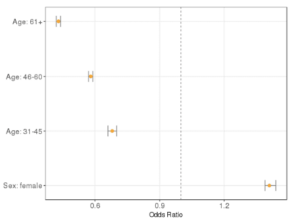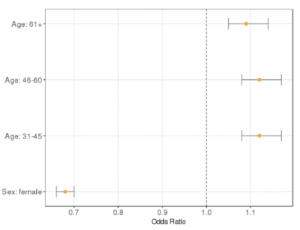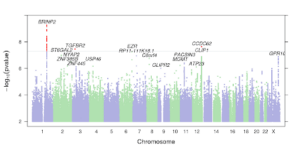By Robert Gentleman and Yunru Huang*
As 2018 draws to a close, many people will be busy making plans — not just for celebrating on the 31st, but making resolutions to better themselves in the new year. Making a New Year’s resolution to improve yourself has ancient roots, including the Romans, who made promises to the god Janus. The tradition is still common today, as anyone who has tried to use a gym in January can attest. But by February, about 80 percent of resolution-makers have already abandoned their goals.
Making a New Year’s resolution to improve yourself has ancient roots, including the Romans, who made promises to the god Janus. The tradition is still common today, as anyone who has tried to use a gym in January can attest. But by February, about 80 percent of resolution-makers have already abandoned their goals.
Why do some people succeed with their New Year’s Resolutions and others fail?
Scientists at 23andMe wanted to research why some of us fail and others succeed. Our team wanted to determine if genetic variants were associated with making and keeping resolutions. To test this hypothesis, we fielded a pair of questions to our customers who consented to participate in research. In March of each of the last three years, we posed the same set of questions to these customers. We asked:
- “Did you make a New Year’s resolution this year?”

Figure 1: Odds ratio plot in relationships between resolvers and demographic characteristics
If someone said “yes,” we then asked this follow-up question:
- “How well have you been able to follow your New Year’s resolution until now?”
Answers were “very well,” “well,” “average,” “poorly,” or “very poorly.”
Resolvers and Adherers
Since some customers answered this question more than once (i.e., in different years), we combined the answers in the following way. A person was deemed a “resolver” if they ever said they made a New Year’s resolution. They were deemed a “control” if they always said they did not. About 21 percent of participants were “resolvers.” Those who had made and kept a resolution were defined as “adherer” if they ever said they adhered to their resolutions “very well” or “well.” Those who said they performed “average,” “poorly,” or “very poorly” at adhering to their resolution were identified as “controls.” About 41 percent of “resolvers” were “adherers”. Our researchers then used this data to conduct a genome-wide association study (GWAS). In our model, we adjusted for age, sex and many quality control variables. We found that women are much more likely to make New Year’s resolutions than men and that the probability of making a New Year’s resolution declines with age (Figure 1).

Figure 2: Odds ratio plot in relationships between adherers and demographic characteristics
Findings
When we consider adhering to the resolution, the effects of age and sex are weaker and are in the other direction. Men are better adherers, and adherence tends to increase as you age (Figure 2). The “adherence” GWAS did not yield any genome-wide significant hits. This analysis is still fairly underpowered, with only about 34,000 cases and 41,000 controls. Our scientists will continue to send research participants the questions every spring, and hopefully, as the sample sizes grow, we will begin to detect interesting variants. There were three genome-wide significant hits for the “resolution” GWAS (Figure 3).
Interestingly, the strongest one was for a SNP (rs6680701). This SNP is near a gene called BRINP2 (BMP/retinoic acid-inducible neural specific 2), and is located on Chromosome 1. This gene has not been studied very much and little is known about it. However, it has been shown to be a developmentally regulated neural-specific gene, and its expression is primarily in the brain and the adrenal gland. In 2017, 23andMe reported on a different SNP (rs11582132) near BRINP2 that has a shared association between schizophrenia and openness — a personality trait where one enjoys trying new things. While offering some intriguing findings, the genetic effects we identified here are mild. Non-genetic factors, like picking reasonable goals and having a supportive environment, also affect how well you stick to your resolution. So don’t rush to blame your genes when you decide to skip that next gym visit or two.

Figure 3. Genome-wide association study Manhattan plot for “Did you make a New Year’s resolution this year?” Possible responses were “yes” (n= 81,669) or “no” (n=293,660). This model treated the responses as a binary variable and adjusted for age, sex, genotyping platform, and the top-5 principal components of genetic ancestry.
*Robert Gentleman, Ph.D., is 23andMe’s vice president of computational biology. Yunru Huang is a scientist in Biostatistics at 23andMe.




